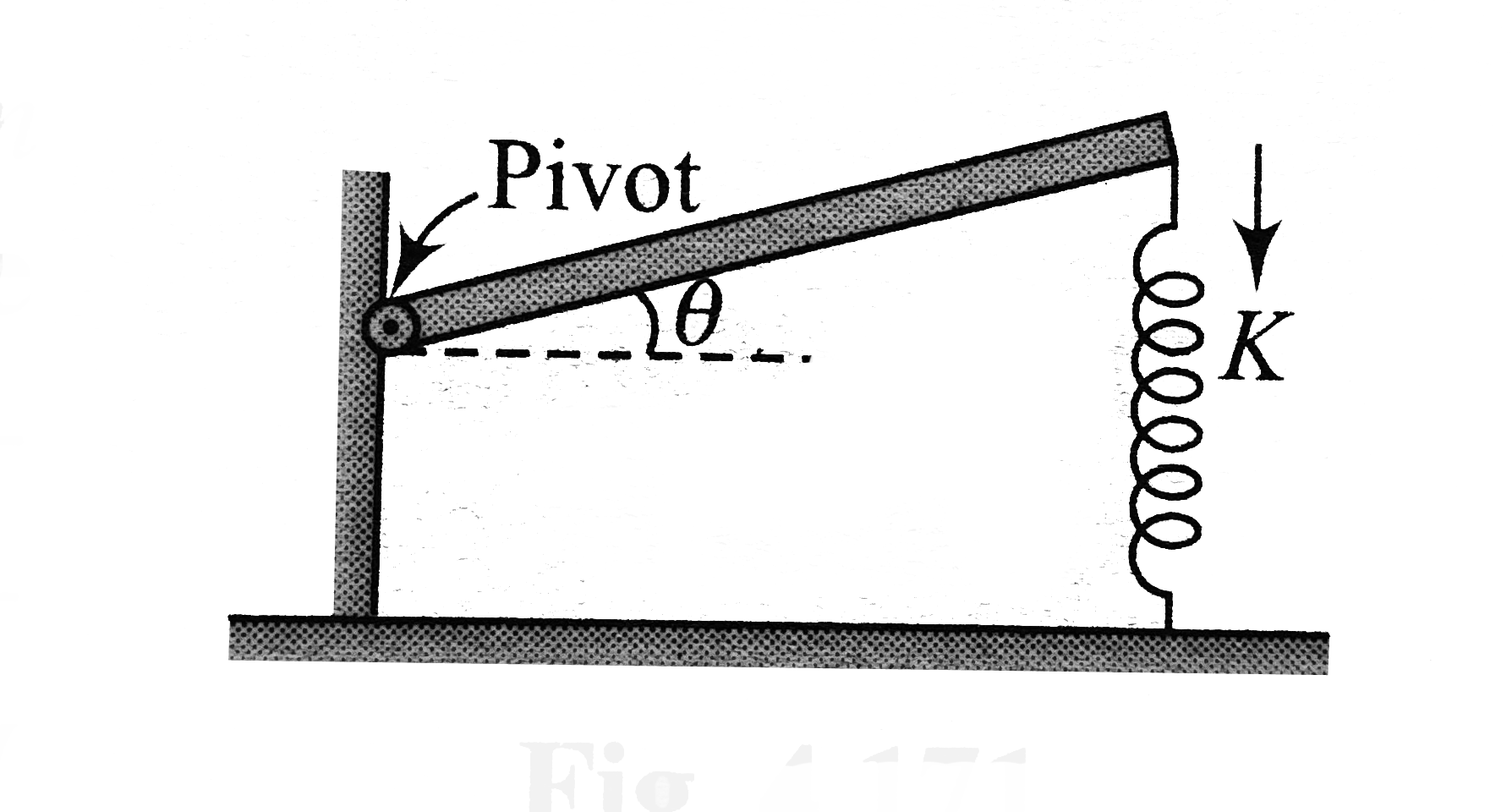Two simple harmonic motions are represented by the equations and . The phase difference of the velocity of particle 1 with respect to the velocity of particle 2 is
1.
2.
3.
4.
The particle executing simple harmonic motion has a kinetic energy . The maximum values of the potential energy and the total energy are respectively
1.
2.
3.
4.
A particle executes simple harmonic motion with a frequency f. The frequency with which its kinetic energy oscillates is
1. f/2
2. f
3. 2f
4. 4f
The potential energy of a particle executing S.H.M is given by
1.
2.
3.
4.
A particle at the end of a spring excuses S.H.M with a period while the corresponding period for another spring is . If the period of oscillation with the two springs in series is T then
1.
2.
3.
4.
A particle of mass m oscillates with a potential energy , where and constants and x is the displacement of particle from equilibrium position. The time period of oscillation is
1.
2.
3.
4.
The amplitude of velocity of a particle is given by, where are positive:
The condition for a single resonant frequency is
1.
2.
3.
4.
The amplitude of a damped oscillator decreases to 0.9 times its original magnitude in 5s. In another 10 s it will decrease to times its original magnitude, where equals
1. 0.7
2. 0.81
3. 0.729
4. 0.6
A pendulum clock loses 12 s a day if the temperature is C and gains 4 s a day if the temperature is C. The temperature at which the clock will show correct time, and the co-effcient of linear expansion () of the metal of the pendulum shaft are respectively:
1. /
2. /
3. /
4. /
A particle performs SHM on x-axis with amplitude A and time period T. The time taken by the particle to travel a distance starting from rest is-
1.
2.
3.
4.
In the figure shown, the spring is light and has a force constant k. The pulley is light and smooth and the strring is light. The suspended block has a mass m. On giving a slight displacement vartically to the block in the downward direction from its equilibrium position the block executes S.H.M. on being released with time period T. Then
1.
2.
3.
4.
A bent tube of uniform cross-section area A has a non-viscous liquid of density p. The mass of liquid in the tube is m. The time period of oscillation of the liquid is
1.
2.
3.
4. none of these
A U-tube is of non uniform cross-section. The area of cross-sections of two sides of tube are A and 2A. It contains non-viscous liquid of mass m. The liquid id displaced slightly and free to oscillate. Its time period of oscillations is
1.
2.
3.
4. none of these
A 1kg mass is attached to a spring of force constant 600 N/m and rests on a smooth horizontal surface with other end of the spring tied to wall as shown in figure. A second mass of 0.5 kg slides along the surface towards the first at 3 m/s. If the masses make a perfectly inelastic collision, then find amplitude and time period of oscillation of combined mass
1. 5 cm,
2. 5 cm,
3. 4 cm,
4. 4 cm,
A uniform cylinder of length L and mass M having cross-sectional area A is suspended, with its length vertical, from a fixed point by a massless spring, such that it is half submerged in a liquid of density at equlibrium position. When the cylinder is given a downward push and released, it starts oscillating vertically with a small amplitude. The time period T of the oscillations of the cylinder will be:
1. Smaller then
2.
3. Larger than
4.
A uniform pole of length = 2 L is laid on smooth horizontal table as shown in figure. The mass of pole is M and it is connected to a frictionless axis at O. A spring with force constant k is connected to the other end. The pole is displaced by a small angle from equilibrium position and released such that it performs small oscillations. Then

1.
2.
3.
4.
A mass M is suspended from a spring of negligible mass. The spring is pulled a little and then released so that the mass executes SHM of time period T. If the mass is increased bym, the time period becomes . Then the ratio of is
1.
2.
3.
4.
The time period of a simple pendulum of infinite length is
1.
2.
3.
4.
Two simple pendulums of length 5 m and 20 m respectively are given small linear displacement in one direction at the same time. They will again be in the phase when the pendulum of shorter length has completed how many oscillations?
1. 5
2. 1
3. 2
4. 3
A block rests on a horizontal table which is executing SHM in the horizontal plane with an ampltude 'a'. If the coefficient of friction is , then the block just starts to slip when the frequency of oscillation is
1.
2.
3.
4.